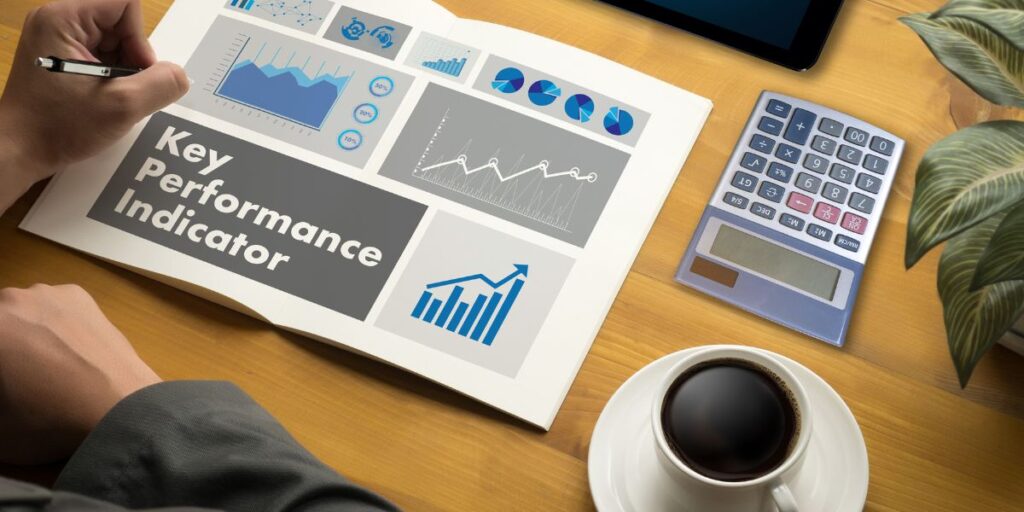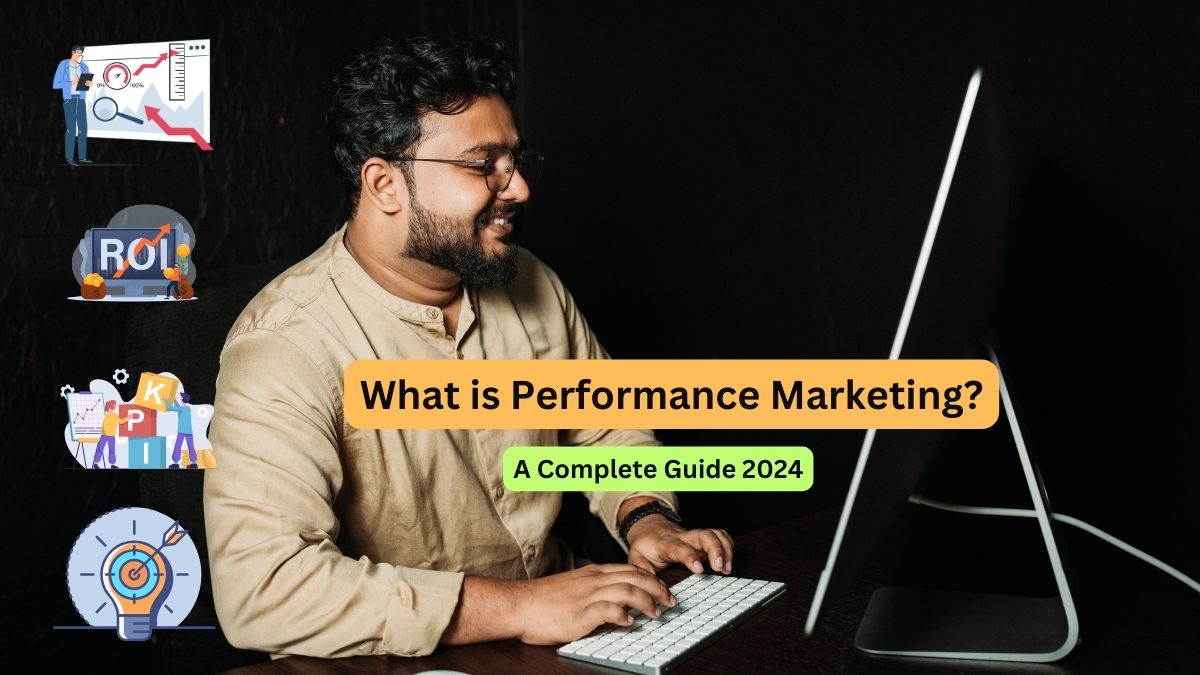As we approach 2024, big changes are happening in digital marketing. To handle this shift, we need a smart plan – a roadmap for success. Fellow marketers, get ready as we explore Performance Marketing for 2024 and how an app marketing agency can benefit from it. Discover insights into the evolving world of digital marketing and learn key strategies for success. We’ll also highlight the top performance marketing agencies leading the way.
What is Performance Marketing?
Performance marketing is a way for brands to advertise online by focusing on measurable results like website visits, leads, and sales. It uses data to target potential customers with the right messages and ads. Unlike brand marketing, which is about building awareness, performance marketing aims to achieve specific business goals and deliver clear, trackable outcomes.

Performance marketing focuses on generating leads and sales using various online channels and tactics. It targets potential customers at all stages of the marketing funnel. This approach delivers a clear return on investment (ROI) and gives brands transparency and control over their marketing budget.
As performance marketing changes, companies need to understand the basics of a good strategy to connect with their audience and grow. Finding the best approach is key to getting good results and meeting goals. This guide will help you understand performance marketing for 2024 and beyond.
Step-by-Step Performance Marketing
While performance marketing is now mostly digital, its basics come from older direct response methods. These include print ads, radio ads, and early TV commercials designed to get immediate reactions, like phone calls, through strong messaging and clear calls-to-action.

As TV ads evolved from loud infomercials to brand-focused campaigns, they combined direct responses with brand-building. These campaigns used audience insights to create engaging content and reach people through measurable media.
Even with the rise of digital marketing, the core ideas of direct and brand response are still important. Marketers can mix traditional and digital methods for better results. For example, traditional ads can support digital ones, and tracking tools can measure success across all channels. By focusing on clear messaging, targeted audiences, strategic media buys, and good analytics, marketers can run effective campaigns that work across both old and new media.
Consistent messaging across all channels helps create a unified marketing approach. Although digital is now dominant, the principles from older methods still apply and guide how to succeed in today’s changing market.
Why Performance Marketing Is Great
Performance marketing has several key benefits that make it a smart choice for managing your marketing budget and getting reliable results:

Results-Focused:
Performance marketing aims for clear, measurable outcomes. By tracking key metrics, you ensure every dollar spent helps achieve your business goals.
Lower Risk:
This approach uses data to guide decisions, reducing the chance of wasted spending compared to traditional ads. You can make better budget choices based on what has worked in the past.
Clear Data:
Performance marketing gives you straightforward data on what works and what doesn’t. This helps you decide where to spend your money, which ads are effective, and where to place them.
Boosts Brand Awareness:
While its main goal is to drive results, performance marketing can also increase brand recognition. Even if some customers aren’t ready to buy right away, seeing your brand can help with long-term growth.
Complete Visibility:
They show which channels and ads are most effective and how each step contributes to the results.
Performance marketing is a powerful way to attract customers and grow your business. By tracking your spending and results closely, you can make smart decisions and improve your marketing efforts for better results.
Key Metrics for Performance Marketing
Performance marketing allows you to track and measure the impact of your campaigns directly. By keeping an eye on these important metrics, you can identify what’s working and where improvements are needed. Here are some key metrics to track:

ROI (Return on Investment)
ROI shows the total revenue earned compared to the cost of the campaign. It helps determine if the campaign is profitable and if it’s worth scaling up.
CPA (Cost Per Acquisition):
CPA measures how much you spend on average to gain a single conversion, such as a sale or a new customer. To stay profitable, the CPA must be lower than the profit margin per sale.
Conversion Rate:
This metric shows the percentage of website visitors who complete a desired action, like signing up for a free trial or making a purchase. A higher conversion rate means more revenue without needing extra traffic.
CPC (Cost Per Click)
CPC is the average amount spent to get a click on your ad. It’s calculated by dividing the total campaign cost by the number of clicks. Lower CPCs suggest that your ad is effective in attracting potential customers.
CTR (Clickthrough Rate):
CTR measures the percentage of ad impressions that result in a click. A higher CTR indicates that your ad’s targeting, messaging, and design are effective.
CPM (Cost Per Thousand Impressions)
CPM shows the cost of getting a thousand views of your ad. This metric is often used for campaigns focused on raising brand awareness rather than direct actions like clicks or conversions.
Tracking these metrics helps you understand which parts of your marketing are working and where you can make improvements to get better results.
How to Create a Successful Performance Marketing Plan

1. Set Clear Goals:
Decide what you want to achieve, like getting more leads, raising brand awareness, or increasing sales. Make sure your goals match your overall business targets.
2. Know Your Audience:
Research who your customers are, what they like, and what they need. Use tools to create profiles of your audience so you can tailor your ads to them.
3. Choose Your Channels:
Pick 2-3 main advertising channels that best reach your audience. Focus on those instead of spreading your efforts across too many options.
4. Partner with Influencers:
Work with trusted websites, creators, and influencers who can promote your brand to their followers. Provide them with the right materials and guidelines for clear tracking.
5. Design Conversion Paths:
Plan the steps you want customers to take from first seeing your ad to making a purchase. Make the process smooth and easy.
6. Track Performance:
Use tools to monitor how well your ads are performing. Track clicks, conversions, and other key data to see what’s working.
7. Optimize Regularly:
Regularly review your data to see which ads and channels are doing best. Adjust your strategy based on what you find and test new ideas.
8. Check Results Often:
Regularly check your campaign results and overall business impact. Be ready to adjust your plan based on new information.
9. Increase Budget Carefully:
If your campaigns are successful, consider increasing your budget, but do it gradually. Keep an eye on performance to ensure you’re getting good returns.
By following these steps, you can build a performance marketing plan that effectively attracts new customers and helps your business grow.
Top Performance Marketing Channels
Performance marketing uses different channels to help brands reach their audience and achieve their goals. Here’s a simple overview of the top channels you can use:
1. Search Engine Optimization (SEO):
SEO helps improve your website’s visibility in search engine results. By using the right keywords and optimizing your site, you can attract more visitors who are looking for what you offer. This can lead to more sales or conversions without having to pay for ads.
2. Content Marketing:
This involves creating useful and engaging content, like blog posts or videos, to attract and keep your audience’s attention. Good content helps build trust and can guide potential customers towards making a purchase.
3. Paid Search Marketing:
These are ads that appear in search engine results when users look for specific keywords. You pay each time someone clicks on your ad. It’s a way to get targeted traffic quickly and effectively.
4. Social Media Marketing:
Ads on social media platforms like Facebook, Instagram, and Twitter let you reach users based on their interests, behaviors, and demographics. Social media ads can be a powerful way to engage with your audience and drive actions.
5. Affiliate Marketing:
This involves working with partners who promote your products or services on their sites or through their networks. You pay them a commission only when they generate sales or leads for you.
6. Display and Native Advertising:
These ads appear on other websites and can be in the form of banners or integrated content. They help increase brand awareness and can be targeted based on user behavior and interests.
7. Email Marketing:
Sending emails to your existing customers or leads can drive sales and build loyalty. By segmenting your email list and personalizing your messages, you can achieve high engagement rates.
8. Direct Response TV (DRTV) and Connected TV (CTV):
DRTV involves ads on traditional TV that encourage immediate action, like calling a number or visiting a website. CTV ads appear on streaming platforms and can be used to reach viewers who prefer watching content on-demand.
Choosing the right mix of these channels depends on your goals and audience. Regularly checking how each channel performs and adjusting your strategy accordingly is key to successful performance marketing.
The Future of Performance Marketing: What to Expect
Performance marketing is changing fast, driven by new technologies and shifts in consumer habits. Here’s a simple look at what’s coming and how you can stay ahead:

1. More AI and Machine Learning:
AI and machine learning are becoming more advanced. They will help predict market trends and understand consumer behavior better. AI will also automate tasks like managing bids and creating personalized content, making marketing more efficient.
2. Hyper-Personalization:
With AI, brands will offer highly personalized experiences. This means tailoring ads and content to each person’s preferences and actions. AI will also help create ads and designs in real-time, making the creative process smoother.
3. AI Marketing Tools:
AI-driven tools will become more common, making it easier to analyze data, customize content, and manage campaigns. These tools will help marketers test and improve different parts of their campaigns more effectively.
4. Focus on Strategy:
As AI takes over routine tasks, marketers will focus more on strategic planning and high-impact activities. Using AI wisely will be key to staying competitive.
5. Voice Search Optimization:
Voice search is growing, so optimizing for voice queries will be important. Marketers will need to adjust their SEO strategies to fit how people talk to voice assistants.
6. Social Commerce and Influencers:
Social media platforms will increasingly be used for direct sales. Influencer marketing will become more about genuine product integration rather than just promotions.
7. Privacy and Data Protection:
With more concern about privacy, marketers will need to be clear about how they collect and use data. Ensuring consumer consent and following privacy rules will be crucial for maintaining trust.
By staying aware of these trends, you can adapt your performance marketing strategies and stay ahead in a rapidly changing digital world.
Key metrics to track include ROI, CPA, conversion rate, CPC, CTR, and CPM. Successful performance marketing involves setting clear goals, understanding your audience, choosing effective channels, and continuously optimizing based on data.
FAQ’s
1. What role do ads play in performance marketing?
Performance creative involves utilizing data to evaluate the effectiveness of specific creative assets and variables, which in turn informs the development of new creative content and strategic ad placements for marketing campaigns.
2. What responsibilities does a Performance Marketing Specialist have?
A Performance Marketing Specialist is responsible for planning, executing, and managing paid advertising campaigns across various platforms like Google Ads and Facebook. They analyze performance metrics, carry out A/B tests, and optimize campaigns to increase click-through rates, conversions, and overall return on investment (ROI).
3. What is the importance of marketing performance metrics?
Evaluating marketing performance is crucial for optimizing your marketing team and achieving the best outcomes for the company. Moreover, establishing methods to assess marketing performance should be a primary task for a marketing department before initiating any marketing activities.
4. What are KPIs in performance marketing?
Key Performance Indicators (KPIs) are metrics that quantify the effectiveness of specific actions in digital marketing. These indicators help determine how closely strategies are meeting their goals. Tracking KPIs is essential as they can fluctuate based on the performance of the campaign. Here are the top 8 digital marketing KPIs to measure in 2024.
Read More
- How To Use Facebook Ad Library To 10X Your Ads
- What is Voice Search Optimization? How to use it ?
- The Best Ways How To Monetize Your Website.
- Top 30+ Digital Marketing Interview Questions.
- AI In Digital Marketing-Ultimate Guide
- How To Delete Linkedin Account: Complete Guide-2024
- How To Download Linkedin Video On Online?
- How is the Digital Marketing different from Traditional Marketing.
- Top Digital Marketing Agencies in Bangalore
- Top Digital Marketing Companies In India
- How to Start a Digital Marketing Agency in 2024?
- Digital Marketing Salary In India?
- How to Create a 3D Social Media Image in bing?
- How to Become a Digital Marketer In 2024
- What is Freelance Digital Marketing ? How Much Earn?
- What is Google Digital Garage? Step by Step Guide
- Free Digital Marketing Course With Top Certificates By Google.
- Digital Marketing is a Good Career Option-2024.
- Digital Marketing Syllabus in 2024
- MBA in Digital Marketing: Requirements, Opportunities, and Earnings
- Advantages and Disadvantages of Social Media for Student’s
- Best Top SEO Company In India- 2024
- SEO Interview Questions and Answer- latest 2024
- What is Combining SEO and Content Marketing? Complete Guide-2024
- Top Google Ads Interview Questions and Answers.
- Ask Meta AI on WhatsApp: Discover the Best AI in the World
- What is AI In Social Media? and How to use it?
- What is Online Advertising ? And Types of Online Advertising ?
- What is Google Ads Credit? And How Do I Claim for Google Ads 2000 Credit?
- Top 30+ Google ads Interview Questions and Answers
- How Can Google Ads Help You Advance Your Business Goals.
- Where Can Your Ads Appear in Search Engine Marketing?
- When Advertising Using Search Engine Marketing(SEM) You Only Pay?
- How to use chat gpt for free: Step by Step guide
- How to use chat gpt for free: Step by Step guide
- How To Use Chat Gpt 4 for Free?
- What is Content Marketing in Digital Marketing?
- What is Marketing Strategy? How do you develop an effective Marketing Strategy?
- Best Performance Marketing Agencies In India?
- What is Performance Marketing Strategy ?
- Pros and Cons of Traditional and Digital Marketing
- What is the Digital Marketeting Funnel ?
- What is Performance Marketing?
- Advantages & DisAdvantages of Digital Marketing.
- What is Social Media Optimization? 7 Tips To Grow Your Social Media.
- Is What’s App a Social Media Platform ?
- Is You Tube Social media Platform? Everything You Need to know
- Is Social Media Getting Banned in India?
- How to Earn Money from Social Media?
- Advantages of Social Media | Some Key Benefits Of Social Media
- Freelance Digital Marketing Jobs in 2024-Complete Guide.
- Career In Digital Marketing: A Complete Guide 2024
- How to Use Google Adsense & Other Options To Monetize Your Website
- How to become a Content Marketer? A Complete Guide 2024
- What are Sales and Marketing Interview Questions for 2024?
- Top 10 Digital Marketing Trends For 2024?
- What is an SEO Studio Tool? And How To Use it?
- SEO Career Path 2024: Job Profiles, Growth, Opportunities
- How do I Create Instagram Content?A Complete guide in 2024.
- How Do I Start Digital Marketing Without Experience. Complete Guide 2024
- 9 Skills You Need to Become a Great Social Media Manager

